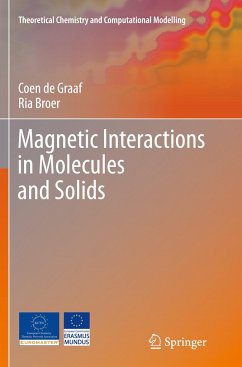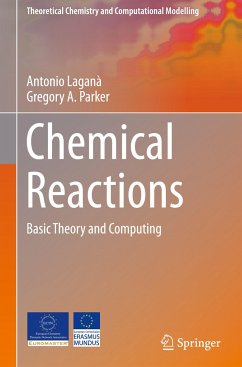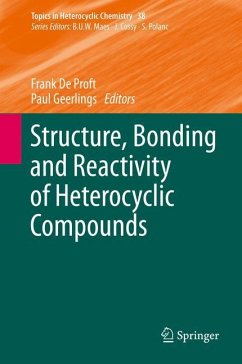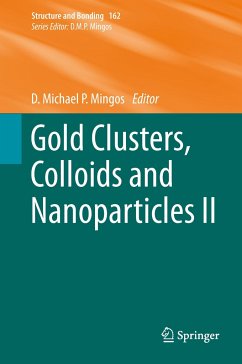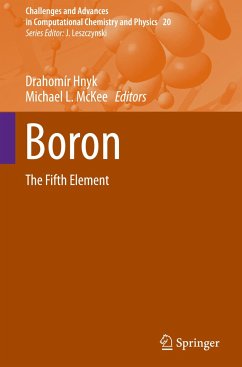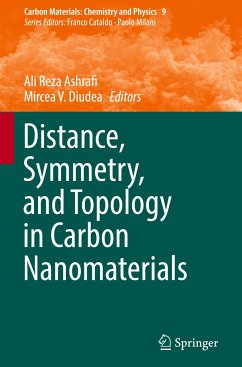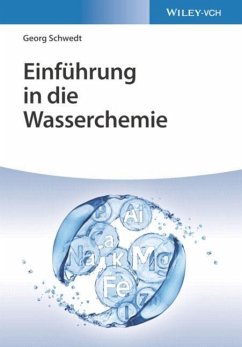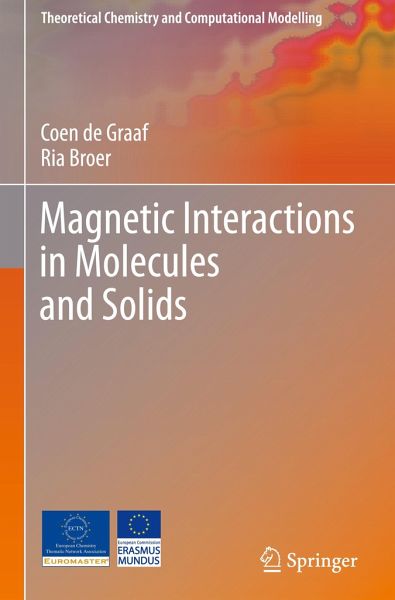
Magnetic Interactions in Molecules and Solids
Versandkostenfrei!
Versandfertig in 6-10 Tagen
38,99 €
inkl. MwSt.
Weitere Ausgaben:

PAYBACK Punkte
19 °P sammeln!
This textbook is the second volume in the Theoretical Chemistry and Computational Modeling series and aims to explain the theoretical basis of magnetic interactions at a level that will be useful for master students in physical, inorganic and organic chemistry.The book gives a treatment of magnetic interactions in terms of the phenomenological spin Hamiltonians that have been such powerful tools for chemistry and physics in the past half century, starting from the simple Heisenberg and Ising Hamiltonians and ending with Hamiltonians that include biquadratic, cyclic or anisotropic exchange. On ...
This textbook is the second volume in the Theoretical Chemistry and Computational Modeling series and aims to explain the theoretical basis of magnetic interactions at a level that will be useful for master students in physical, inorganic and organic chemistry.
The book gives a treatment of magnetic interactions in terms of the phenomenological spin Hamiltonians that have been such powerful tools for chemistry and physics in the past half century, starting from the simple Heisenberg and Ising Hamiltonians and ending with Hamiltonians that include biquadratic, cyclic or anisotropic exchange. On the other hand, it also explains how quantum chemical methods, reaching from simple mean field methods to accurate models that include the effects of electron correlation and spin-orbit coupling, can help to understand the magnetic properties. Connecting the two perspectives is an essential aspect of the book, since it leads to a deeper understanding of the relation between physical phenomena and basic properties. It also makes clear that in many cases one can derive magnetic coupling parameters not only from experiment, but also from accurate ab initio calculations.
The book starts with introducing a selection of basic concepts and tools. Throughout the book the text is interlarded with exercises, stimulating the students to not only read but also verify the assertions and perform (parts of) the derivations by themselves. In addition, each chapter ends with a number of problems that can be used to check whether the material has been understood.
The book gives a treatment of magnetic interactions in terms of the phenomenological spin Hamiltonians that have been such powerful tools for chemistry and physics in the past half century, starting from the simple Heisenberg and Ising Hamiltonians and ending with Hamiltonians that include biquadratic, cyclic or anisotropic exchange. On the other hand, it also explains how quantum chemical methods, reaching from simple mean field methods to accurate models that include the effects of electron correlation and spin-orbit coupling, can help to understand the magnetic properties. Connecting the two perspectives is an essential aspect of the book, since it leads to a deeper understanding of the relation between physical phenomena and basic properties. It also makes clear that in many cases one can derive magnetic coupling parameters not only from experiment, but also from accurate ab initio calculations.
The book starts with introducing a selection of basic concepts and tools. Throughout the book the text is interlarded with exercises, stimulating the students to not only read but also verify the assertions and perform (parts of) the derivations by themselves. In addition, each chapter ends with a number of problems that can be used to check whether the material has been understood.



